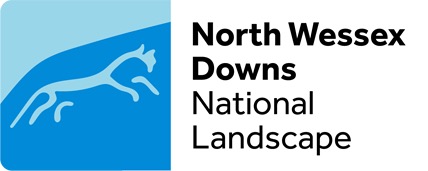North Wessex Downs

We are lucky to be positioned in the North Wessex Downs National Landscape. You may have spotted the road sign as you enter Highclere on the A343 from the North. Do have a browse of their website, there is so much interesting and helpful information on there.
Presentation from the chair, Henry Oliver, on 14 October 2025.
Henry presented at a Highclere Parish Council meeting on 14 October, which members of EWPC attended. Henry provided a comprehensive and inspiring update on the expanding work of the North Wessex Downs team, highlighting their growth, partnerships, and achievements across the landscape.
Team Growth and Focus
The team has grown from four to eleven members, with additional staff funded through joint projects. They balance core work on behalf of local authorities and parishes with project-based delivery tied to the North Wessex Downs Management Plan. Covering 700 square miles, nine local authorities, 173 parishes, and four counties, the team handles a vast workload, including 794 planning consultations last year.
Planning, Guidance, and Publications
Henry described the team’s planning input and their role in providing practical guidance to local authorities and communities. Recent publications include:
• A Colour Guide for building and refurbishment in harmony with the landscape.
• Lighting Guidance to reduce light pollution.
• A Historic Landscape Characterisation resource, showing how the past shapes the present landscape.
Nature and Farming Initiatives
The team’s Nature Recovery Plan sets the direction for county-level strategies, working closely with farmers across now 15 “farmer clusters.” These groups collaborate on habitat creation, climate resilience, and water management — with the team acting as a convenor, connecting and empowering local land managers.
Projects have included ancient woodland restoration, chalk grassland recovery, wetland creation, and innovative arable wildflower work. Through the Farming in Protected Landscapes programme, over £3.3 million has been awarded to support 180 local projects improving nature, climate, and access.
Partnership and Heritage Projects
The team has delivered a wide range of partnership initiatives, from the Historic Ridgeway Project (surveying and conserving monuments) to Mend the Gap, mitigating visual impact from rail electrification by enhancing chalk landscapes and wetlands. They also run annual Walking Festivals that encourage communities to explore the landscape.
Education and Community Engagement
While resources limit school engagement, the team supports school habitat projects through the Mend the Gap programme and works with farmers to host educational visits. They also promote inclusive access, for example, by improving rural paths and creating resources for new walking groups, including those from under-represented communities.
Looking Ahead
Henry shared the forthcoming Management Plan (2025 edition), due for publication in November, which outlines how local councils and parishes can contribute—from heritage and signage initiatives to dark-sky events and local sourcing. He encouraged parishes to collaborate, report on their Section 85 duties, and get involved in nature recovery.
Finally, Henry introduced The Big Chalk, an ambitious regional initiative linking chalk landscapes from Dorset to Kent to create connected corridors for wildlife and people — a powerful vision for large-scale collaboration and climate resilience.